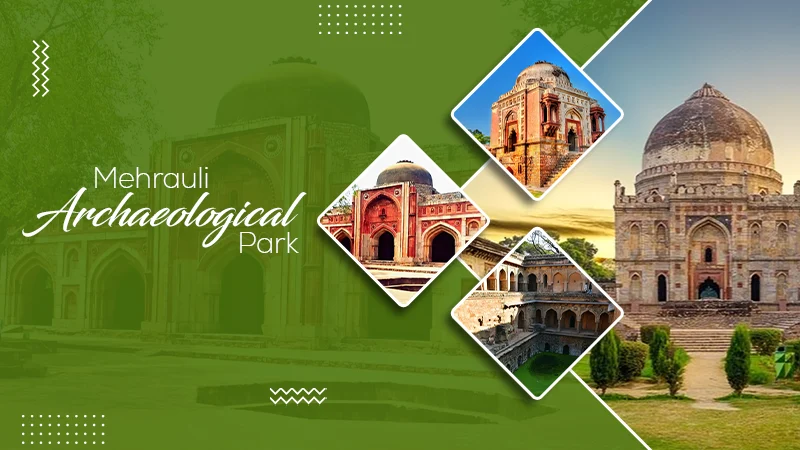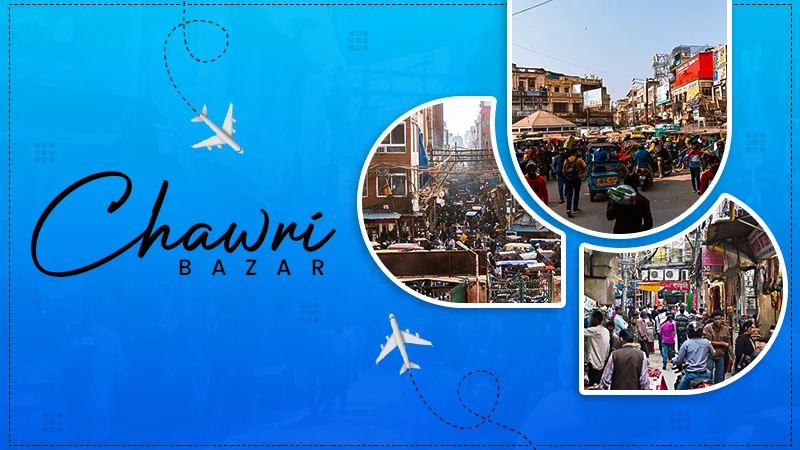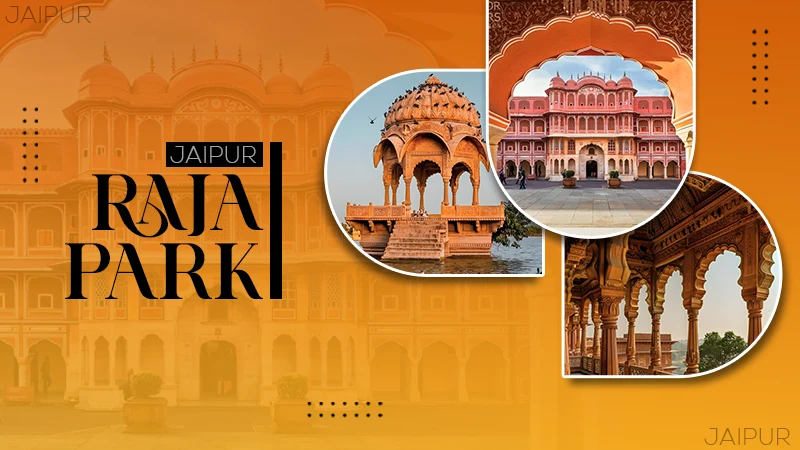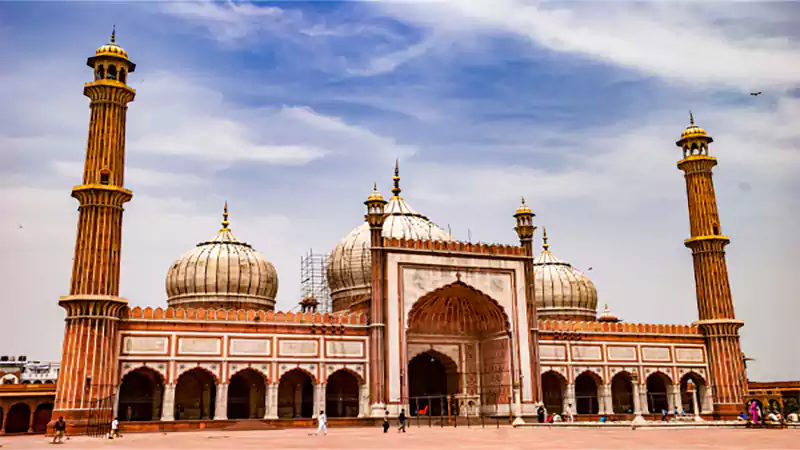
- Introduction to Jama Masjid, Delhi
- Where is Jama Masjid Located?
- The History of Jama Masjid Chandni Chowk New Delhi
- The Cultural and Religious Importance of Jama Masjid
- Jama Masjid Architecture: A Masterpiece of Mughal Design
- Jama Masjid Inside: A Tranquil Experience
- Jama Masjid Timings and Visiting Details
- How to Reach Jama Masjid Chandi Chowk New Delhi?
- Places to Visit Near Jama Masjid
- Parting Thoughts
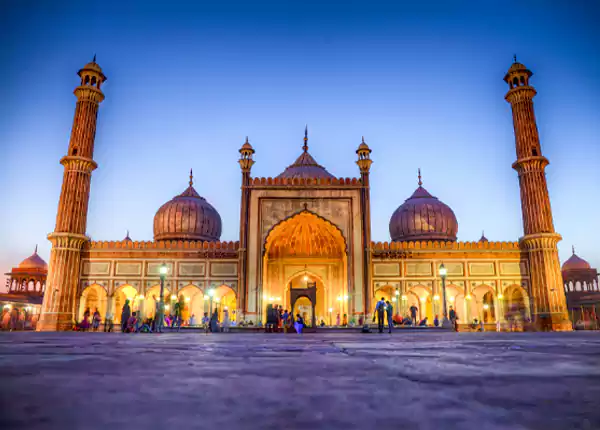
Jama Masjid Chandni Chowk New Delhi is one of the most iconic and revered landmarks in India, standing tall in the heart of New Delhi, amidst the bustling lanes of Chandni Chowk.
With its grand architecture, rich history, and cultural significance, this majestic mosque is not just a place of worship but also a symbol of India’s architectural brilliance during the Mughal era.
This article delves into the history, significance, and various aspects of the Jama Masjid, which continues to draw millions of visitors each year.
Introduction to Jama Masjid, Delhi
Located in the heart of Old Delhi, Jama Masjid is one of the largest mosques in India and a significant piece of Delhi’s historical and religious fabric.
The mosque is situated near Chandni Chowk, a historic market known for its lively atmosphere and vibrant street life. A visit to Jama Masjid offers a fascinating glimpse into the grandeur of Mughal architecture and Islamic culture. The mosque is a major attraction for tourists, history enthusiasts, and devotees alike.
Where is Jama Masjid Located?
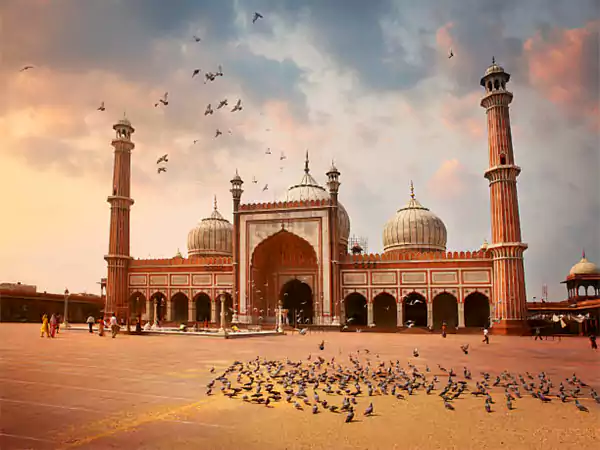
Jama Masjid is located in Chandni Chowk New Delhi, in close proximity to several other historical sites such as the Red Fort and the famous markets of Old Delhi. The mosque stands tall, and its imposing minarets and domes dominate the skyline of the area.
The mosque can be easily accessed from various parts of Delhi, and the closest metro station is Chandni Chowk Metro Station of Delhi Metro, which is just a short walk away from the mosque.
The History of Jama Masjid Chandni Chowk New Delhi
As written in history, the construction of the Jama Masjid was commissioned by the Mughal Emperor Shah Jahan, the same ruler who built the Taj Mahal in Agra. The mosque was completed in 1656, after a span of six years, and was designed by the architect Ustad Khalil.
This mosque was intended to be a symbol of the grandeur and power of the Mughal Empire, as well as a center of Islamic worship, learning, and culture.
The construction was funded by Shah Jahan himself, and the mosque was built at an impressive cost of around 10 lakh rupees, a considerable amount in those times.
The mosque was built using red sandstone, marble, and precious stones, and it showcases the exceptional craftsmanship of the period. With a capacity to accommodate more than 25,000 worshippers, Jama Masjid remains one of the largest mosques in India.
The Cultural and Religious Importance of Jama Masjid
Jama Masjid holds immense religious and cultural importance for Muslims, not just in Delhi but across India. The mosque is considered a vital center of worship, especially during the holy month of Ramadan, when it hosts special night prayers.
Jumma Masjid is a focal point for the weekly Friday prayers, drawing thousands of worshippers. The mosque is also used for Islamic learning and is home to a number of madrasas (Islamic schools) that provide education on Islamic scriptures, language, and culture.
Jama Masjid also plays a pivotal role in the cultural life of Delhi. Its proximity to the vibrant streets of Chandni Chowk means it is at the heart of a thriving community of traders, residents, and pilgrims, all contributing to the rich tapestry of the city.
Jama Masjid Architecture: A Masterpiece of Mughal Design
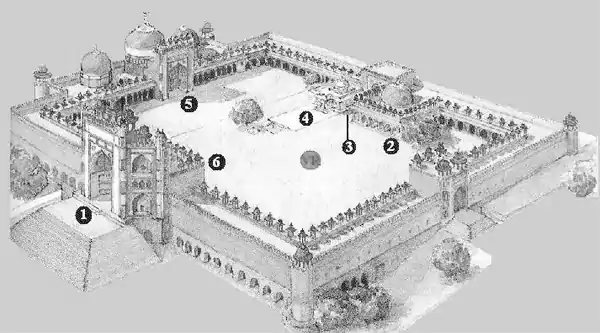
The architecture of the Jama Masjid is a blend of Persian, Mughal, and Indo-Islamic styles. This mosque features three large domes, each of which is made of white marble and is adorned with intricate carvings.
Furthermore, the minarets at the four corners of the mosque are towering, standing at an impressive height of 40 meters. The mosque is characterized by its large courtyard, which serves as the focal point for the congregation during prayers, especially on Jumma (Friday).
Inside the mosque, visitors can admire the beautiful arches and the marble flooring, which reflect the grandeur of the Mughal era. The intricate artwork on the walls, including calligraphy and floral patterns, is a testament to the exquisite craftsmanship of the time.
The mosque’s main prayer hall is divided into sections by rows of pillars, and it features an elaborate mihrab (a niche indicating the direction of Mecca) and a marble pulpit (minbar) used by the imam during prayers.
Jama Masjid Inside: A Tranquil Experience
The interior of the Jama Masjid Chandni Chowk New Delhi is equally captivating. Its large central dome allows natural light to pour in, illuminating the marble floors and giving the space a serene and peaceful ambiance. Visitors often find the experience inside the mosque to be calming, with the sound of prayers echoing softly throughout.
The mihrab, an important feature inside the mosque, is beautifully adorned with intricate calligraphy and stonework, which adds to the spiritual atmosphere.
Jama Masjid Timings and Visiting Details
Jama Masjid is open to visitors every day, except during prayer times. The mosque has specific visiting hours, which generally range from 7:00 AM to 12:00 PM and then from 1:30 PM to 6:30 PM.
During Jumma prayers on Friday, the mosque can become quite crowded as it is the central place of worship for many locals. Visitors are welcome to explore the mosque, but it is advised to respect the prayer timings and avoid visiting during peak hours.
If you’re planning to visit, you may want to ensure that you dress modestly, as the mosque is a place of worship. Shoes are to be removed before entering, and women are required to cover their heads with a scarf or shawl.
Jama Masjid Gate Number 1
The main entrance to the mosque is through Gate Number 1, which is the most commonly used and accessible gate for visitors. Furthermore, the gate opens up into the main courtyard of the mosque, where you can admire the grandeur of the mosque’s exterior and interior.
Gate Number 1 leads directly to the mosque’s stunning prayer hall, offering a direct view of the magnificent structure.
Jama Masjid Tickets and Entry Fees
There is no entry fee to visit Jama Masjid. However, there may be a small fee for photography. Photography enthusiasts can capture the beauty of the mosque from its stunning exterior, intricate interiors, and historical surroundings.
The ticket for photography is usually modest, and visitors are allowed to take pictures in most parts of the mosque, except during prayers.
How to Reach Jama Masjid Chandi Chowk New Delhi?

Jama Masjid Chandni Chowk New Delhi, located in the heart of Old Delhi, is easily accessible via multiple transportation options:
- By Metro: The nearest metro station is Chandni Chowk Metro Station on the Yellow Line. From there, it’s a 5-10 minute walk to the mosque. Alternatively, you can take the Blue Line and change at Rajiv Chowk or Central Secretariat, then take a taxi or auto-rickshaw to Chandni Chowk.
- By Bus: Delhi’s extensive bus network serves Chandni Chowk and Daryaganj areas, with buses dropping passengers near the Chandni Chowk Bus Stand. From there, it’s a short walk to Jama Masjid.
- By Auto-Rickshaw or Taxi: Auto-rickshaws and taxis are easily available. You can take them directly to Jama Masjid, asking to be dropped off at Gate Number 1, the main entrance. Traffic can be heavy in this area, especially during prayer times.
- By Car: If driving, use Netaji Subhash Marg or Chandni Chowk Road to access the mosque. However, parking can be difficult due to heavy traffic in the area, so public transport is recommended.
- Walking: If you’re already in Old Delhi, Jama Masjid is easily walkable from many nearby locations, like Chandni Chowk. The walk through the vibrant market area adds to the experience.
- Best Time to Visit: To avoid crowds, visit in the early morning or late afternoon. Be mindful of Jumma prayers on Fridays, when the mosque is especially crowded.
With these options, reaching Jama Masjid is simple, and you’ll get to experience the lively atmosphere of Old Delhi along the way.
Places to Visit Near Jama Masjid
The area surrounding Jama Masjid is rich in history and culture, offering many other places to explore:
- Chandni Chowk: One of the oldest and busiest markets in Delhi, offering a wide range of products from traditional clothing to jewelry and street food.
- Red Fort: A UNESCO World Heritage Site and another prominent Mughal architectural masterpiece.
- Raj Ghat: The memorial site of Mahatma Gandhi, located nearby.
- Kinari Bazaar: Known for its traditional wedding market, selling embellishments, fabrics, and accessories.
- Gauri Shankar Temple: A Hindu temple located near Jama Masjid, known for its unique architecture.
Parting Thoughts
Jama Masjid in Delhi is much more than just a place of worship. It is a historical monument, an architectural masterpiece, and a center of culture and community.
With its grand structure, rich history, and central location in the heart of Delhi, Jama Masjid continues to be one of the most prominent landmarks in India. Whether you’re a history lover, an architecture enthusiast, or simply a traveler seeking to experience the heart of Delhi, a visit to Jama Masjid Chandni Chowk New Delhi is a must.
Its beauty and significance leave a lasting impression, making it one of the most important sites in India’s cultural and religious landscape.
Is there parking available near Jama Masjid?
Parking near Jama Masjid is quite limited due to the heavy traffic in Old Delhi. It’s recommended to use public transport or take an auto-rickshaw or taxi. If you drive, look for nearby parking lots, but be prepared for the challenge, especially during peak hours.
Can I visit Jama Masjid at any time of the day?
Jama Masjid is open to visitors daily, but it is best to avoid peak prayer times, especially during Jumma (Friday) prayers when it is most crowded. Visiting in the early morning or late afternoon ensures a more peaceful experience.
What are the visiting hours of Jama Masjid?
The mosque is generally open for visitors from 7:00 AM to 12:00 PM and from 1:30 PM to 6:30 PM. However, it’s closed during prayer times, and it is advisable to plan your visit accordingly to avoid large crowds during peak worship hours.
Why is Jama Masjid Famous?
Jama Masjid is one of the largest mosques in India, with the capacity to accommodate over 25,000 worshippers. It is an iconic example of Mughal architecture, showcasing intricate designs, large domes, and towering minarets.

